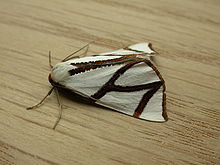
Platypleura is a genus of cicadas that occurs widely across Africa and southern Asia. Some of the South African species are remarkable for their endothermic thermoregulation that enables crepuscular signalling, an adaptation that reduces risk of predation and enables a greater range for their calls. In field experiments their maximum body temperature while calling at dusk, was measured at 22 °C above ambient temperature.
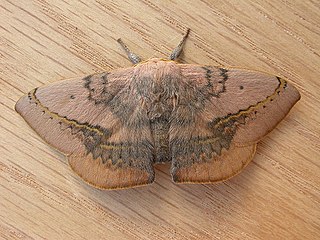
Anthela varia, the variable anthelid, is a moth of the family Anthelidae. The species was first described by Francis Walker in 1855. It is found in the coastal areas of southern Western Australia, southern Queensland, New South Wales, and Victoria.

Thalaina selenaea is a moth of the family Geometridae. It is found throughout eastern Australia, including Tasmania. Although the common name Satin Moth is used for this species, that name is already applied to Leucoma salicis, an unrelated species native to Europe and Asia. Thalaina selenaea is also called the Orange-rimmed Satin Moth
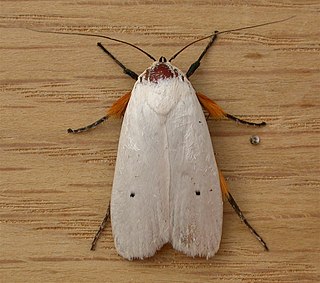
The fruit tree borer is a moth of the family Xyloryctidae. It is native to Australia.
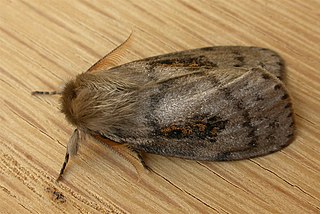
Leptocneria reducta, the white cedar moth, is a moth of the subfamily Lymantriinae. The species was first described by Francis Walker in 1855. It is found in all of Australia, except Tasmania.

Neola semiaurata is a moth of the family Notodontidae. Described by Francis Walker in 1855, it is found in Australia.

Doratifera quadriguttata, the four-spotted cup moth, is a moth of the family Limacodidae. The species was first described by Francis Walker in 1855. It is found in Australia.

Leucoma is a genus of tussock moths in the family Erebidae. The species are well distributed in Palearctic, Ethiopian, and Oriental regions along with New Britain and Ireland. It was described by Jacob Hübner in 1822.
Beralade obliquata is a moth of the family Lasiocampidae first described by Johann Christoph Friedrich Klug in 1830. It is found from Morocco to Egypt and Sudan.

Phrissogonus is a monotypic moth genus in the family Geometridae erected by Arthur Gardiner Butler in 1882. Its only species, Phrissogonus laticostata, the apple looper, was first described by Francis Walker in 1862. It is found in Australia, New Caledonia and New Zealand.

Thalaina is a genus of moths in the family Geometridae first described by Francis Walker in 1855.

Donuca spectabilis, the white-spotted owl-moth, is a moth of the family Noctuidae. The species was first described by Francis Walker in 1865. It is found in most of mainland Australia.
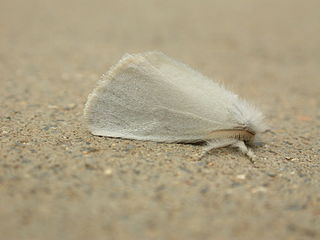
Acyphas semiochrea, the omnivorous tussock moth, is a moth of the subfamily Lymantriinae first described by Gottlieb August Wilhelm Herrich-Schäffer in 1855. It is found along most of the coast of Australia, including: New South Wales, Queensland, South Australia, Tasmania, Victoria and Western Australia.
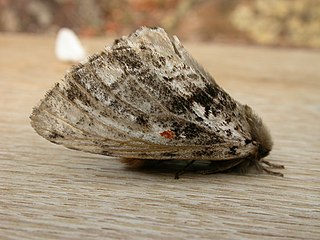
Aglaosoma variegata, the patterned notodontid, is a species of moth of the family Notodontidae first described by Francis Walker in 1855. It is known from the Australian states of New South Wales, Queensland and Victoria.

Orgyia postica, the cocoa tussock moth or hevea tussock moth, is a species of moth of the subfamily Lymantriinae of the family Erebidae found in the Oriental tropics of India, Sri Lanka, Myanmar, Borneo, Java, New Guinea, and Taiwan. It was described by Francis Walker in 1855.

Chloroclystis approximata, the cherry looper moth, is a moth in the family Geometridae. It was described by Francis Walker in 1869. It is found in Australia.

Xyleutes is a genus of moths belonging to the family Cossidae and typical of the tribe Xyleutini.
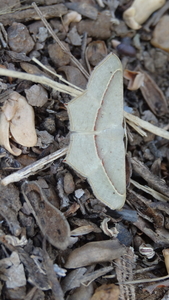
Traminda mundissima is a species of moth of the family Geometridae. It is found in Bahrain, Oman, the United Arab Emirates, Yemen, India, Thailand, New Calidonia and Australia, where it has been recorded from Western Australia, Queensland and New South Wales.

Suana concolor is a moth of the family Lasiocampidae first described by Francis Walker in 1855. It is found in India and Sri Lanka, to South China, Java, Borneo and the Philippines.
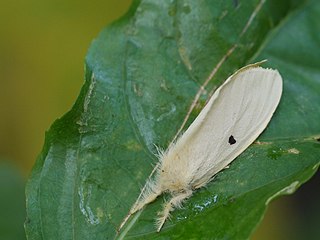
Euproctis lunata, the castor hairy caterpillar, is a moth of the family Erebidae. The species was first described by Francis Walker in 1855. It is found in India, Pakistan, Sri Lanka and Thailand.
